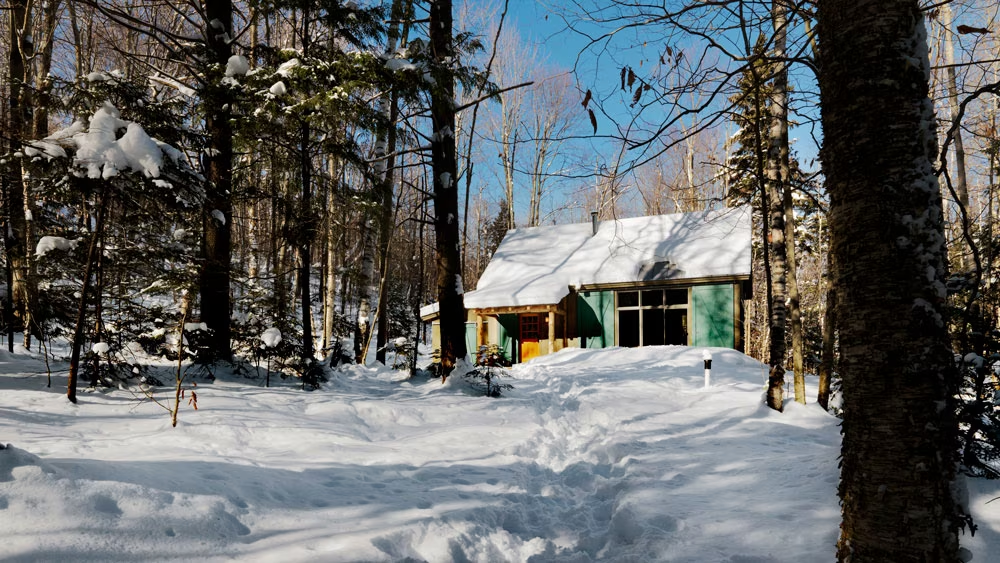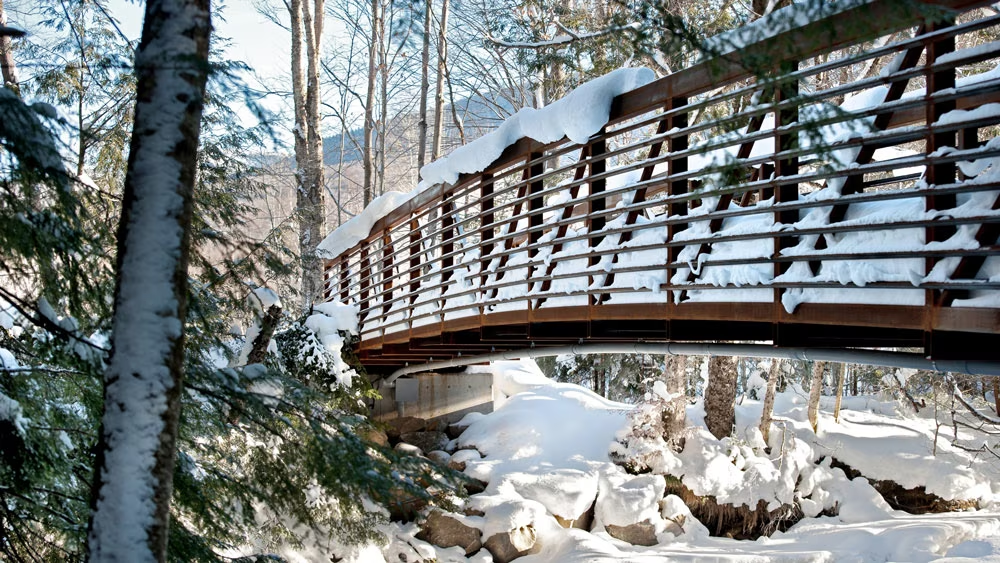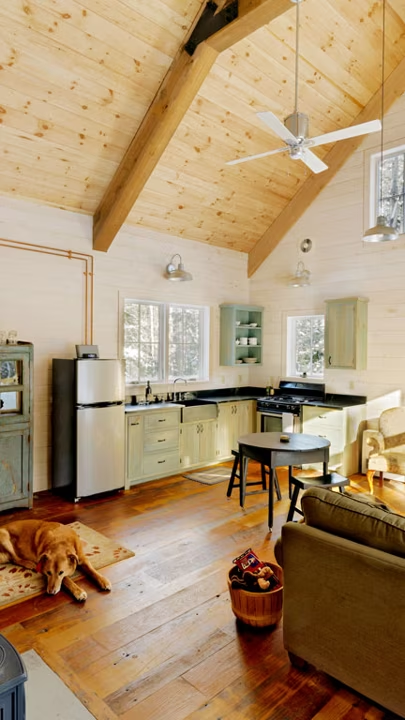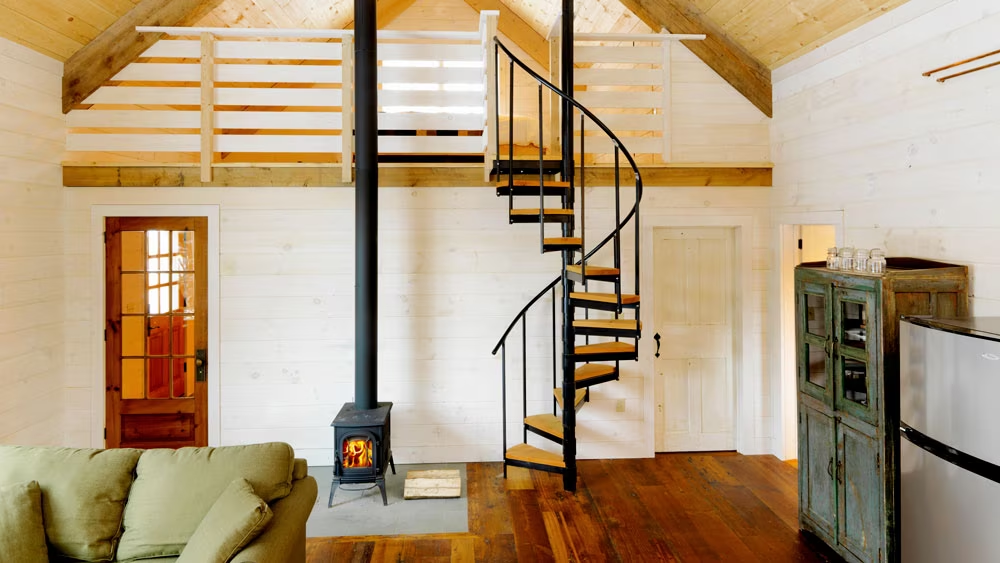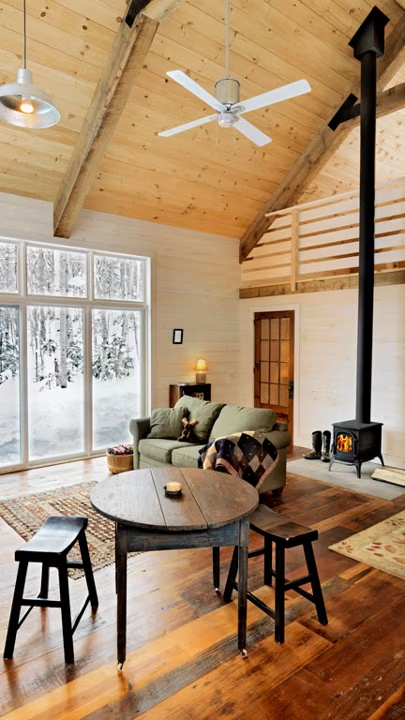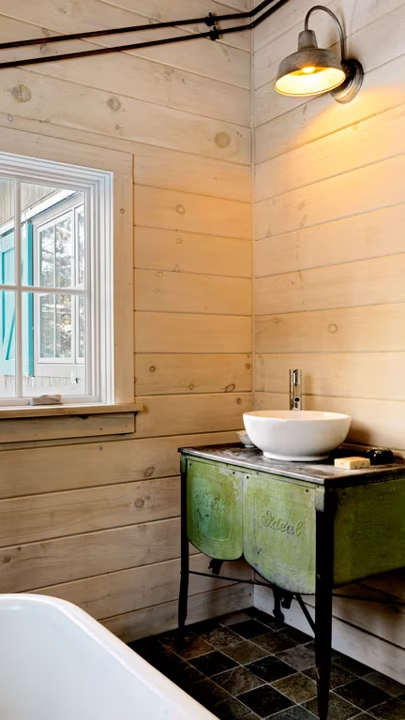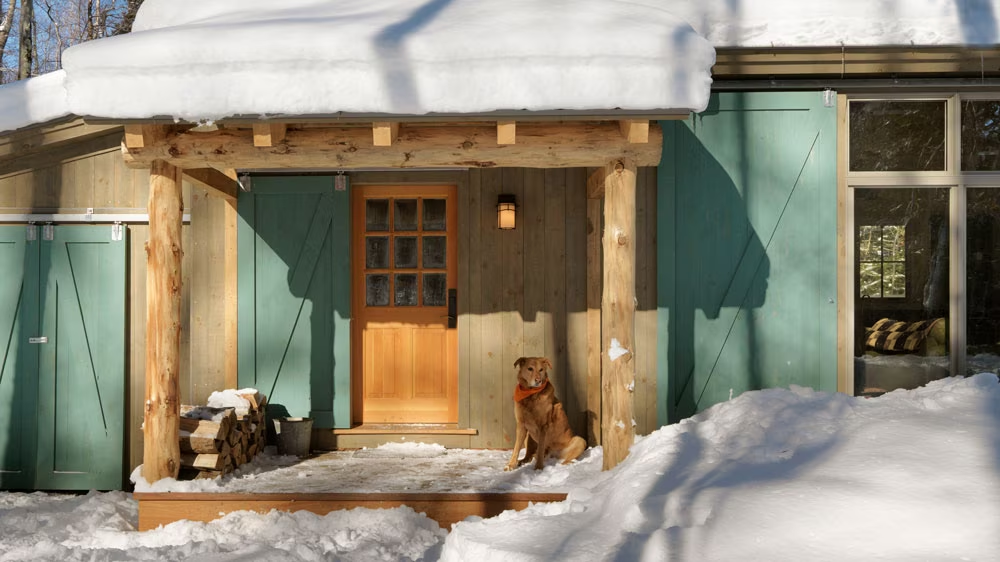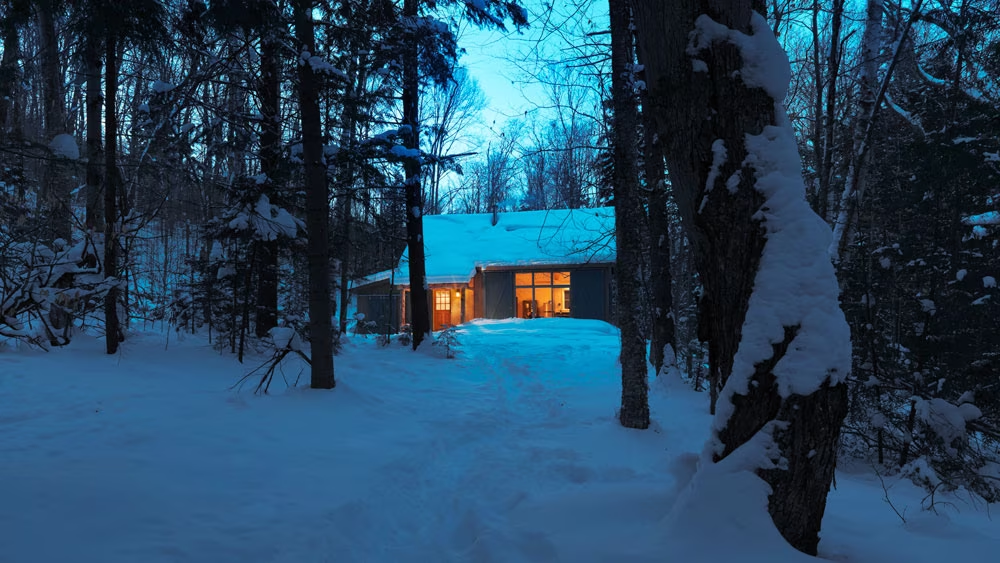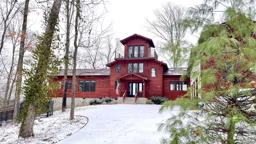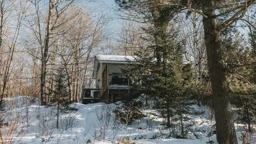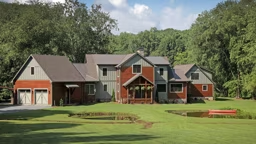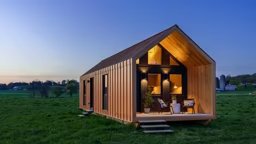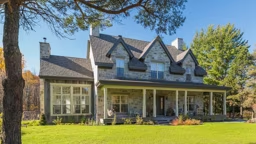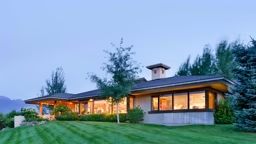Photos by Susan Teare
During the winter, owners Eric and Phiona Milano traverse Vermont’s deep and drifted snow to get to their family cabin, accompanied by their little boy, Franco. The journey takes about an hour from their home on Lake Champlain in Burlington, Vt., to the northern tip of the Green Mountain National Forest.
Only instead of a horse-drawn sleigh, the Milanos load provisions for their stay onto a horsepowered one. There is no paved access to the cabin. The nearest road ends a mile away, then becomes a snowmobile trail – part of a statewide system known as VAST. So the Milanos park the car in the trail lot, walk across a pedestrian bridge, and up a steep path to the cabin. While Phiona and Franco settle in, Eric retrieves his snowmobile and sled, returning by a different route with the gear.
The remote access to the cabin suits this adventurous 30-something couple. “We didn’t want vehicles or a driveway,” says Eric. As a college student in Burlington, he often hiked to a nearby primitive campsite on the New Haven River. “Great trout fishing,” recalls the New York City native. On one outing, Eric noticed a “For Sale” sign. He purchased 14 acres that straddled the river, with a view of the Green Mountains and Mount Abraham – a high peak in Vermont.
After Eric married fellow student Phiona and Franco was born, the couple decided to build. To keep their getaway secluded, Eric chose a site on the far side of the river. Toward the end of 2008, he consulted Bristol, Vt., architect Joan Heaton PC, design in hand.
The original concept for the cabin came from the Yestermorrow School, a design/build school in Waitsfield, Vt., that teaches sustainable design, green building and more. “I took a carpentry class, then a design class,” says Eric. “It helped me lay out land on paper, figure out where I wanted the trail, and where to site the cabin.”
Remote-Site Challenges
Even though this cabin was a small project, it posed big challenges. For starters, how does one get construction materials to a site with no vehicular access? Heaton crossed that hurdle with a 75-foot-long pedestrian bridge.
Made in the Midwest, the single-span steel bridge was delivered in one piece by truck and lowered by crane onto poured concrete and steel abutments. All supplies had to be hauled across by foot. “Everything was dictated by the site,” says Heaton. “The remoteness influenced design choices and materials. We used as many local materials as possible.”
Keeping It Green
Cost was another concern. The crew needed to keep within a tight budget, half of which went to site development: power, septic, a dug well.
Eric also wanted the cabin to be energy efficient and well insulated. “I plan to keep it for a long time,” he says.
Silver Maple Construction of Bristol, Vt., was chosen as the builder for the project, given the expertise of principals Sean Flynn and Mike Steele have with rugged terrain and because of their commitment to sustainability. The cabin sits on piers, as there was no access for a cement truck to pour a foundation.
Sited for passive solar heating, floor-to-ceiling windows admit light and views. An open, airy layout and high ceilings make the retreat seem larger than 600 square feet. The mudroom entry leads into a living, kitchen and dining area, with a bathroom and Franco’s little bedroom to the side. The couple’s sleeping loft is above the entry.
Most interior furnishings were found at local salvage yards. The reclaimed treasures include doors, a spiral staircase, knobs, hinges and a cool claw-foot tub. “That’s for me,” laughs Phiona. “While Eric could live out in the woods, I’m not as rugged. I love the outdoors,” says this Seattle native, “but I also love creature comforts.”
Completed in the fall of 2009, the cabin has quickly become a year-round retreat. The region’s extensive ski- and hiking-trail systems are a favorite source of fresh-air fun. After a day’s outing, the Milanos unwind with board games and s’mores over a bonfire. They enjoy hearing the sound of rushing water while they relax on the back deck, high above the stony New Haven River.
Both Phiona and Eric love to cook as well, whether on the barbeque or indoors. Often, they are joined by relatives or friends with children Franco’s age. Other times, when Eric’s not managing his motorbike-tour company, MotoVermont, he invites buddies (Franco included) for a camp and fish weekend.
When Eric and Franco are outside exploring, Phiona relaxes with a knitting or sewing project. (She owns Nido, a fabric and yarn shop in Burlington.) “The cabin was built to suit the needs of the whole family,” says Phiona. “There’s space for us to do the things we each enjoy.”
Design Resources
Architect: Joan Heaton, Joan Heaton Architects, Bristol, Vt., www.joanheatonarchitects.com
General Contractor: Silver Maple Construction, Bristol, Vt., www.silvermapleconstruction.com
Bridge: Contech Engineered Solutions, www.conteches.com
Salvage Yards: Mason Brothers Architectural Salvage Warehouse, Essex Junction, Vt., www.greatsalvage.com; Vermont Salvage, White River Junction, Vt., www.vermontsalvage.com
Windows: Marvin Integrity, www.integritywindows.com



